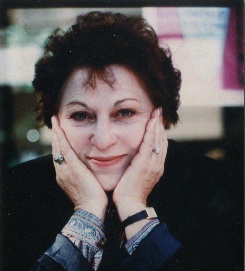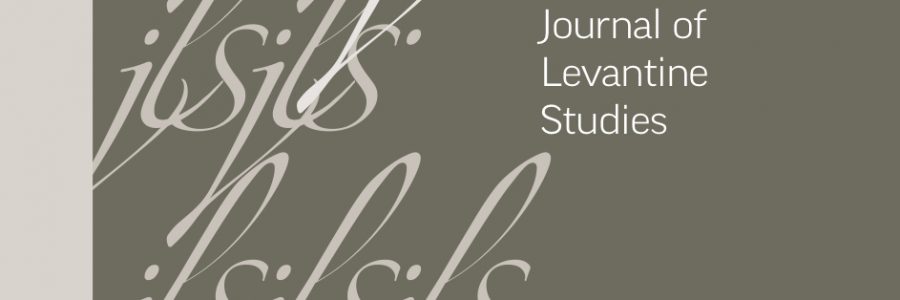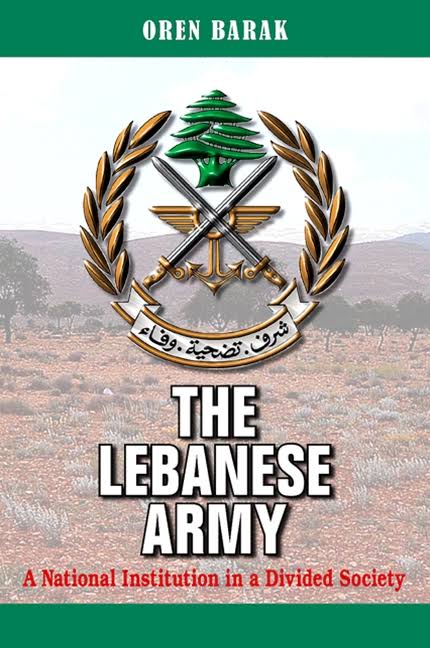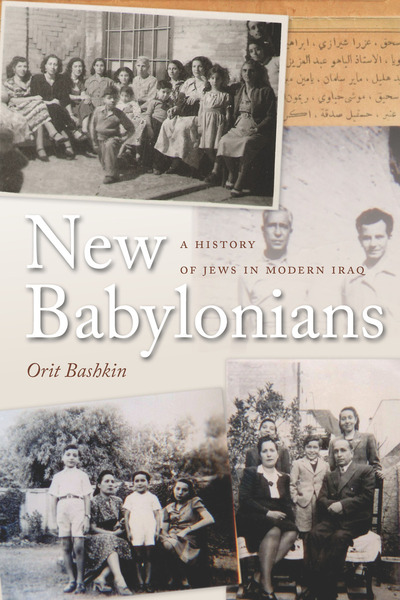-
 Add to cartQuick view
Add to cartQuick viewDoes Turkish Literature Exist? An Attempt to Answer through the Works of Leyla Erbil, Şavkar Altınel, and Ataol Behramoğlu
Free!This dossier presents three translated essays, by Leyla Erbil (1931–2013), Şavkar Altınel (1953–), and Ataol Behramoğlu (1942–), that inquire into the question of authenticity as related to tradition, individuality, and artistic creativity. The authors try to define what these concepts mean in the Turkish literary field. Prof. Sibel Erol’s essay serves as both an editorial introduction to these translations and an investigation in its own right into the question of whether there is a real Turkish literature. She engages with the heart of the debate through an analysis of the Turkish writer Erbil’s essay titled “On the Question of an Authentic and Original Turkish Literature.” Altınel’s “Yahya Kemal, T. S. Eliot, and the Force of ‘Tradition'” and Behramoğlu’s “Organic Poetry,” while not written directly in response to Erbil’s essay or the question she raises, are in conversation with each other, enriching the debate on literary tradition in general and the state of Turkish literature in particular.
Add to cartQuick view -
Add to cartQuick view
Erotics of the Exotic: Orientalism and Fictionalization of the Mooress in the Early Modern Mediterranean
Free!The representation of women in the realm of Islam in early modern Spanish literary, religious, historical, and political texts provides a very significant key to the perception of the “Other” in Spain. These women were categorized according to their radically different circumstances: in Spain they were Moriscas (where they were the objects of an internal colonization), but in the Ottoman Empire (which was seen as a threat to Christian Europe) they were Moras and Turcas. Muslim women were systematically portrayed as highly sexualized subjects, sometimes in combination with the mystified harem and the slave market. In a tone ranging from contempt and disgust to ravishing desire, Muslim women were depicted as sensual and sexually accessible creatures. This Occidental fantasy was a means of establishing an imaginary domain over a powerful rival. Such representations of women were themselves essentially Orientalist, even when they occurred prior to the colonial and postcolonial relationship between the West and the Orient, suggesting that Orientalism itself ought not to be exclusively linked with colonialism and postcolonialism.
Add to cartQuick view -
 Add to cartQuick view
Add to cartQuick viewGender, Religion, and Secularism in the English Mission Hospital of Jerusalem, 1844–1880
Free!This article offers new insights into the operation of the Mission Hospital built in Jerusalem in 1844 by the London Society for Promoting Christianity amongst the Jews (LJS) and the space that was created within it. I argue that the encounter in Jerusalem between Jewish women and the missionaries worked to create a liminal space that was neither religious nor secular, neither Jewish nor Christian, but all (and none) of these at once. I draw on Olwen Hufton’s concept of the “economy of makeshifts” to portray the hospital’s unique space. Based on the existing literature and new evidence, I show that in effect the Mission Hospital served women more than men, and I suggest that the gender composition of the patients allowed the hospital to succeed and helped to shape its operation. After a brief review of the literature, I introduce the LJS and compare its Jerusalem medical mission with contemporary medical institutions in England. I then expand on evidence showing that the Mission Hospital was in fact more of a women’s hospital and suggest why that was the case.
Add to cartQuick view -
 Add to cartQuick view
Add to cartQuick viewGuest Editors’ Note – Beyond Connectivity: The Middle East in Global History
Free!Add to cartQuick view -
 Add to cartQuick view
Add to cartQuick viewGuest Editors’ Note: From the Neoclassical to the Binational Model of Translation
Free!Literary translation—whether a branch within comparative literature, linguistics, hermeneutics, or elsewhere in the academic disciplinary maze—has grown and developed mainly in accordance with the European neoclassical tradition. The previous issue of JLS was dedicated to the critique of the neoclassical model’s supposed transparency and impartial representation of the original source, allegedly trying to reach a “fluent” translation of the original.
To cope with translation from Arabic to Hebrew under the conditions of the present time, the Translators’ Circle in Maktoob proposes a pragmatic model of translation that transcends the comfort zone and is open to negotiation and a dialogical process of movement and wrestling in a dynamic relationship of dialogue. Although the model is fraught with practical, economic, and empirical difficulties, and is not necessarily pragmatic, it relies on the philosophy of pragmatism, according to which translation is not only a textual achievement but also action in the real world, which seeks to overcome the elements of alienation and degeneration of the individual, nationalistic portrait of translation. The translation turns from a metatext, which is placed behind the text and whose function is to explain and illuminate, into a social text, as a basis for communication and for expression of collective consciousness. In other words, and paraphrasing Ferdinand de Saussure’s notion that language should be studied in and for itself, we argue that translation is not only a thing in and for and of itself but also a communication tool, a byproduct of a comprehensive political process. To this end it expands the concept of intertextuality from hermeneutics to sociology. That is, intertextuality is not just an encounter between textual units, as is commonly the case in the fields of hermeneutics, linguistics, and literature, but also an interactive sociological mechanism based on encounter and reciprocity between people.
Add to cartQuick view -
Add to cartQuick view
Imperial Ottoman Identity in Salonica at the End of Ottoman Rule
Free!This paper examines the development of imperial Ottoman identity at the end of Ottoman rule in Salonica. This identity transcended communal divisions and antagonized separatist nationalisms fostered by neighboring Balkan states. It is argued that this identity was promoted by the Young Turk Revolution of 1908, at least rhetorically, and more importantly, by the cosmopolitan setting of Ottoman port cities. As imperial Ottoman identity was developed within Salonica’s pre/proto-nationalist and multicommunalframework, this paper focuses on loci conducive to an imperial Ottoman imaginary, such as newspapers, urban landscape, civic festivities and events, and schools. Newspapers promoted imagination of a common Ottoman community, articulated Ottomanness, and depicted Salonica as a shared city. The conviviality of Salonica’s communities was experienced in entertainment sites and public places, while Salonicans experienced a magnificent multiplicity of architectural styles and encountered the diversity of religions, languages, and cultures in their daily life. Political events, such as the Young Turk Revolution, and civic festivities, such as the visit of Sultan Mehmed V, mobilized Salonicans across communal boundaries. High-quality and foreign schools had become loci of embryonic Ottoman cross-national elites. In tandem with the development of imperial Ottoman identity, Balkan nationalisms were competing for the minds and souls of Salonicans with their antagonism culminating in the Balkan Wars and the demise of Ottoman rule and identity.
Add to cartQuick view -
Add to cartQuick view
James Bryce and the Origins of the Armenian Question
Free!James Bryce's association with Armenia became well known from his, and Arnold Toynbee's, famous Blue Book on the Armenian Genocide (1916). However, only a handful of studies have been published about Bryce's life-long, and especially about his “early,” Armenian engagements. As this article aims to show, his Armenian mission from the 1870s until the massacres of 1894–1896 deserves greater attention. In these years Bryce attempted to stir up awareness of the suffering of the Armenian communities in the Ottoman Empire. These efforts were mainly aimed toward the internal British scene. Some followed Bryce's lead and supported his Armenian cause, while others doubted his reports and regarded them as “exaggerations.” Bryce's comprehension of the Armenian Question resulted from his general assessment of the power struggle between the major European powers. This struggle has in recent years become, as seen for instance in Donald Bloxham's book The Great Game of Genocide (2005), a central theme in the study of the Armenian Question. In the context of this power struggle, especially between Britain and Russia, Bryce had, quite uniquely, grasped the ominous potential of the Armenian Question by the end of the 1870s. As elaborated in the article, despite Bryce's firm position about the urgent need to intervene in Armenia, there was an almost unbridgeable gap during these years between his moral or ideological stance and the actual abilities of the British government. In short, a breach existed between Bryce's compulsion and Britain's realpolitik constraints.
Add to cartQuick view -
Add to cartQuick view
May Your Sons Settle the Land: David Ben-Gurion’s Attitude toward Tel Aviv as Reflected in the Press
Free!With the establishment of the State of Israel and the reduction of power and political status that the Tel Aviv municipality had enjoyed under the British Mandate, an open confrontation erupted between the central government, led by the Mapai Party, and Tel Aviv’s municipal government, aligned with the General Zionists. This dogged struggle was thoroughly covered in the Hebrew press, which at the time consisted partly of partisan newspapers. This article examines and analyzes the attitude of David Ben-Gurion, Israel’s first prime minister, toward Tel Aviv in particular and toward the process of urbanization in the state in general. Through the prism of Tel Aviv, the article defines and analyzes Ben-Gurion’s ambivalent attitude toward the emergent Israeli urbanization. To understand Ben-Gurion’s attitude toward both urbanization and Tel Aviv, the article also examines the underlying approach of the leadership of the Yishuv, and later of the state, toward cities as opposed to rural areas, and it considers the settlement strategy during the Mandate and the early years of the state. Did Ben-Gurion indeed seek to disperse Tel Aviv’s residents throughout the country? Did he turn his back on the city he had lived in and in which he had declared the independence of the State of Israel? The article deals with these and other questions.
Add to cartQuick view -
Add to cartQuick view
Orit Bashkin, New Babylonians: A History of Jews in Modern Iraq Stanford: Stanford University Press, 2012. 328 pp.
Orit Bashkin, New Babylonians: A History of Jews in Modern Iraq. Stanford: Stanford University Press, 2012. 328 pp.
$5.00Free!Add to cartQuick view -
Add to cartQuick view
Review Essay: Minorities and Majorities: The Nation-State and Identitarian Politics in the Modern Levant
Free!Kais M. Firro, Metamorphosis of the Nation (al-Umma): The Rise of Arabism and Minorities in Syria and Lebanon, 1850–1940. Brighton; Portland, OR: Sussex Academic Press, 2009. 201 pp.Benjamin Thomas White, The Emergence of Minorities in the Middle East: The Politics of Community in French Mandate Syria. Edinburgh: Edinburgh University Press, 2011. 239 pp.Add to cartQuick view -
Add to cartQuick view
Review Essay: The Transforming Landscape of Turkey’s Alevi Politics
Free!Review Essay:
Elise Massicard, The Alevis in Turkey and Europe: Identity and Managing Territorial Diversity. New York: Routledge, 2013. 255 pp.Necdet Subaşı, Alevi Modernleşmesi: Sırrı Faş Eylemek. İstanbul: Timaş, 2008. 320 pp.Add to cartQuick view
- Home
- About JLS
- Issues
- Vol. 9 No. 1 | Summer 2019
- Vol 8 No 2 Winter 2018
- Vol. 8, No. 1: Summer 2018
- Vol. 7, No. 2: Winter 2017
- Vol. 7, 1: Summer 2017
- Vol. 6, Summer/Winter 2016
- Vol. 5, No. 2 Winter 2015
- Vol. 5, No. 1 Summer 2015
- Vol. 4, No. 2 Winter 2014
- Vol. 4, No. 1 Summer 2014
- Vol. 3, No. 2 Winter 2013
- Vol. 3, No. 1 Summer 2013
- Vol. 2, No. 2 Winter 2012
- Vol. 2, No. 1 Summer 2012
- Vol. 1, No. 2 Winter 2011
- Vol. 1, No. 1 Summer 2011
- Blog
- dock-uments
- Subscribe
- Submit
- Contact




